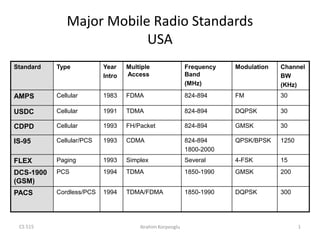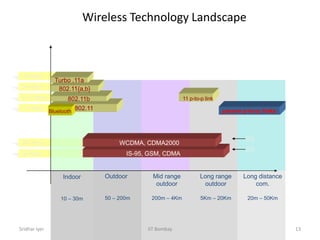This document summarizes several major mobile radio standards used in the United States and Europe. It provides information on the standard type, year introduced, multiple access technique used, operating frequency band, modulation type, and channel bandwidth for standards such as AMPS, GSM, CDMA, IS-95 and others. Additionally, it discusses the evolution of cellular networks through generations from analog to digital systems and increasing data capabilities.






















































